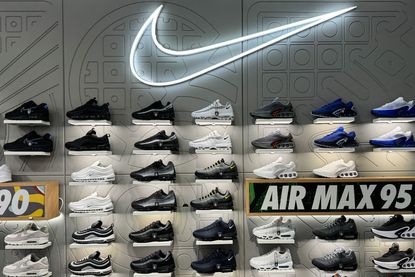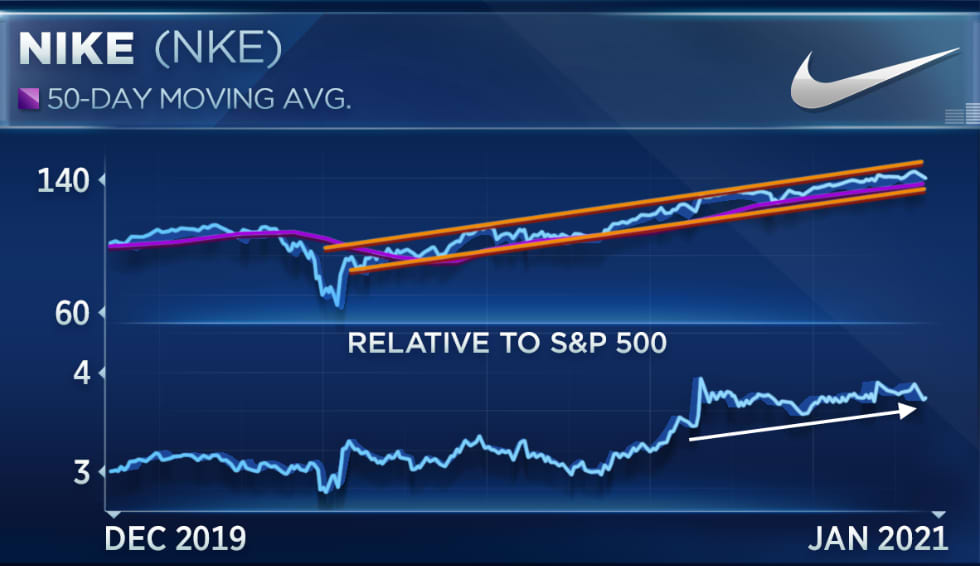Nike stock: About, what they Do, Stock Price, Founders, CEO, CFO, Revenue, Founded, President, Analyst Forecast, what’s New, Updates And Everything To Know

Nike, headquartered in Beaverton, Oregon, designs, develops, and sells athletic footwear, apparel, equipment, and accessories worldwide. They offer products under various trademarks, including Jumpman, Converse, and Chuck Taylor. Additionally, Nike licenses unaffiliated parties to manufacture and sell apparel and equipment under its owned trademarks.
Product Lines:
-
- Athletic and casual footwear, apparel, and accessories under the Jumpman trademark.
- Casual sneakers, apparel, and accessories under the Converse, Chuck Taylor, All Star, One Star, Star Chevron, and Jack Purcell trademarks.
- Performance equipment and accessories (bags, sport balls, eyewear, etc.) under the NIKE brand.
- Licensed college and professional team apparel.
Distribution:
Sold through footwear stores, sporting goods stores, athletic specialty stores, department stores, and online platforms.
- Market Cap: $141.97 billion
- 52-Week High: $123.39
- 52-Week Low: $74.55
- PE Ratio (TTM): 20.22
- Forward Dividend & Yield: $1.48 (1.56%)
- Earnings Date: June 27, 2024

What They Do:
-
- Nike provides athletic and casual footwear, apparel, and accessories under various trademarks.
- Their product categories span running, basketball, soccer, training, sportswear, and the iconic Jordan brand.
- Nike also offers performance equipment like bags, sport balls, eyewear, and digital devices.
Founders:
-
- Co-founded by Phil Knight and Bill Bowerman in 1964.
- Knight remains a significant shareholder, also owning approximately one-third of the company.
CEO and Leadership:
-
- John Donahoe currently serves as Nike’s CEO.
- The company has undergone leadership changes over the years.
Financials and Stock Price:
-
- As of the latest data, Nike’s stock price is around $94.19.
- Nike’s market cap is approximately $142 billion.
- The company generates revenue through product sales, licensing, and also sponsorships.
Recent News and Challenges:
-
- Nike faces challenges in maintaining market share against brands like Hoka and On.
- The company recently projected a larger sales decline for 2025, also impacting its stock value.
Recent trends related to Nike Inc. (NKE) stock:
- Sales Performance:
- For the most recent financial year, Nike is expected to report net income growth of 8.6% to $5.51 billion. Adjusted earnings per share are also projected to reach $3.70, reflecting a 14% increase.
- However, it’s worth noting that sales growth for the full year is expected to be only 1%, which is the worst result in more than two decades (excluding the first year of the pandemic and the 2008-09 financial crisis).
- Stock Price Movement:
- Over the past year, Nike’s stock (NKE) has declined from around $147 to $128, underperforming broader indices. During the same period, the S&P 500 fell about 8%.
- The 52-week high for Nike stock was $123.39, while the low was $88.66.
- Analyst Views:
- Analysts have adjusted their price targets for Nike stock. The average target is $120.71, with a high estimate of $140.00 and also a low estimate of $104.00.
- Some analysts have paused their buy calls on Nike due to the company’s warning of slower growth ahead.

Recent financial results for NIKE, Inc. (NKE):
- Full Year 2024 Revenues:
- NIKE reported $51.4 billion in full-year revenues, a 1% increase on a currency-neutral basis compared to the prior year.
- Fourth Quarter 2024 Revenues:
- Fourth quarter revenues were $12.6 billion, down 2% on a reported basis but flat on a currency-neutral basis.
- Segment Breakdown:
- NIKE Direct Revenues: $5.1 billion (down 8% on a reported basis, down 7% on a currency-neutral basis).
- Also Wholesale Revenues: $7.1 billion (up 5% on a reported basis, up 8% on a currency-neutral basis).
- Converse Revenues: $480 million (down 18% on a reported basis, down 17% on a currency-neutral basis).
- Gross Margin:
- Fourth quarter gross margin increased by 110 basis points to 44.7% due to strategic pricing actions, lower freight rates, and logistics costs.



